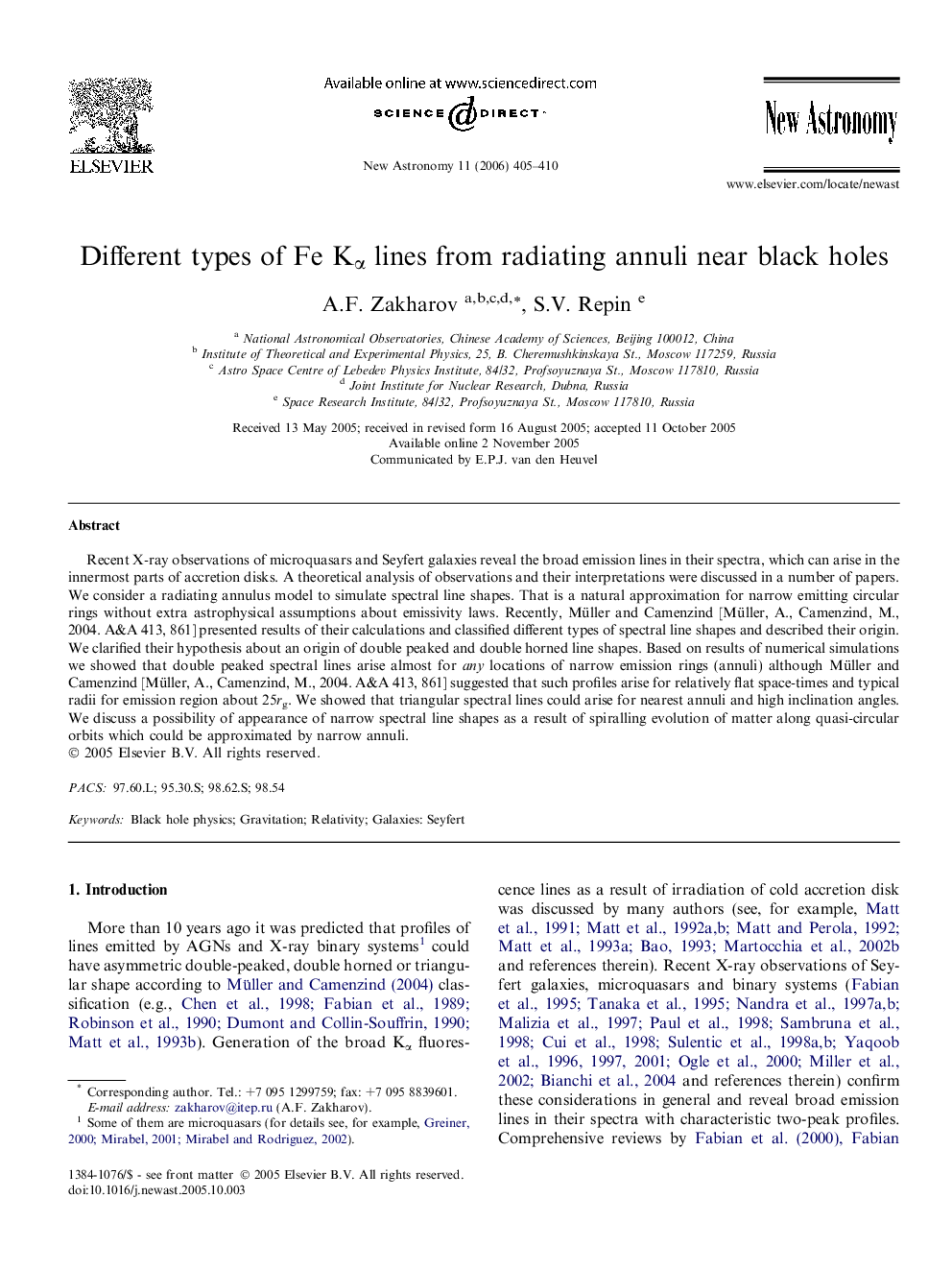| Article ID | Journal | Published Year | Pages | File Type |
|---|---|---|---|---|
| 1779602 | New Astronomy | 2006 | 6 Pages |
Abstract
Recent X-ray observations of microquasars and Seyfert galaxies reveal the broad emission lines in their spectra, which can arise in the innermost parts of accretion disks. A theoretical analysis of observations and their interpretations were discussed in a number of papers. We consider a radiating annulus model to simulate spectral line shapes. That is a natural approximation for narrow emitting circular rings without extra astrophysical assumptions about emissivity laws. Recently, Müller and Camenzind [Müller, A., Camenzind, M., 2004. A&A 413, 861] presented results of their calculations and classified different types of spectral line shapes and described their origin. We clarified their hypothesis about an origin of double peaked and double horned line shapes. Based on results of numerical simulations we showed that double peaked spectral lines arise almost for any locations of narrow emission rings (annuli) although Müller and Camenzind [Müller, A., Camenzind, M., 2004. A&A 413, 861] suggested that such profiles arise for relatively flat space-times and typical radii for emission region about 25rg. We showed that triangular spectral lines could arise for nearest annuli and high inclination angles. We discuss a possibility of appearance of narrow spectral line shapes as a result of spiralling evolution of matter along quasi-circular orbits which could be approximated by narrow annuli.
Related Topics
Physical Sciences and Engineering
Physics and Astronomy
Astronomy and Astrophysics
Authors
A.F. Zakharov, S.V. Repin,
